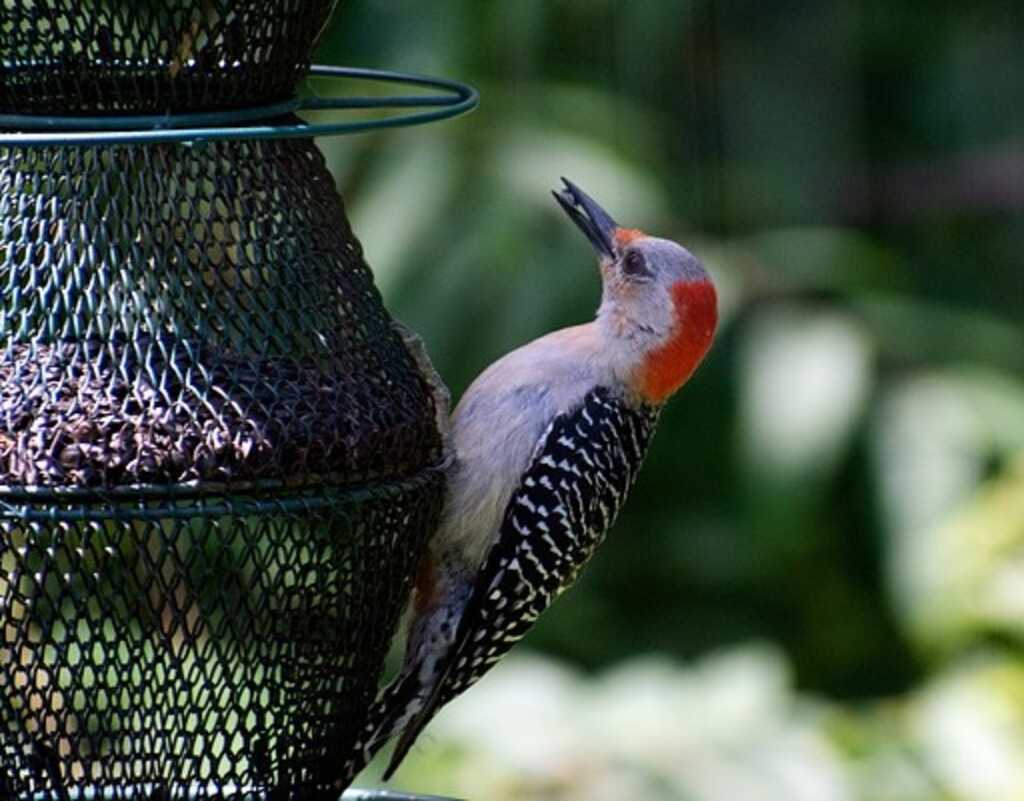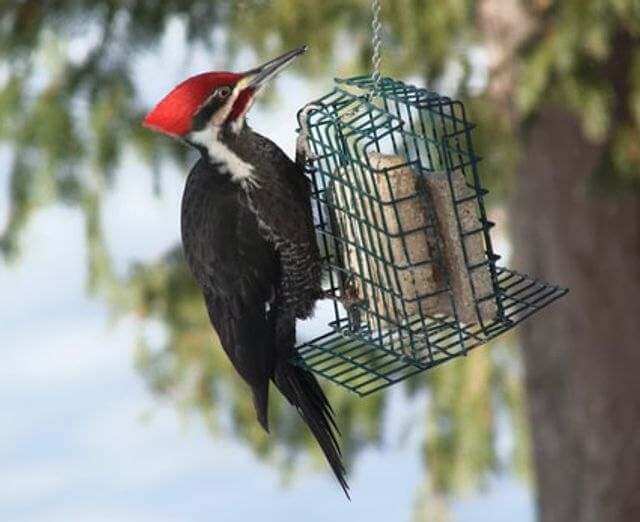Embark on a journey through Iowa’s woodlands with our ultimate guide to the 8 types of woodpeckers! From the striking Pileated Woodpecker to the elusive Red-headed Woodpecker, Iowa’s forests and woodlots provide a habitat for a diverse array of these fascinating birds.
In this comprehensive guide, we’ll delve into the unique characteristics, habitats, and behaviors of each woodpecker species, offering valuable insights for bird enthusiasts and nature lovers alike.
Table of Contents
Types of Woodpeckers in Iowa
Downy Woodpecker

- Length: 5.5-6.7 in (14-17 cm)
- Weight: 0.7-1.0 oz. (21-28 g)
- Wingspan: 9.8-11.8 in (25-30 cm)
- Scientific Name: Picoides pubescens
- Frequency of Occurrence: 37.59% (Statistic by: eBird)
- Where To Find Them: Downy Woodpecker are found throughout Iowa, but some of their most common locations are around the Des Moines and Quad Cities areas. These birds are often seen in trees near bodies of water, such as lakes and rivers.
- How to Attract: Give them a place to hang out. Downy woodpeckers like trees with lots of foliage and places to perch, so provide them with plenty of black-oil sunflower seeds and millet, as well as some peanuts. Install a bird bath or water fountain near your feeder. These attractions will help keep the birds coming back for more!
Description: The Downy Woodpecker is a common bird in North America. It ranges from southern Canada to central Mexico, and west to Texas. The Downy Woodpecker is most common in the eastern half of its range. In the west, it ranges as far north as Oregon and Nevada. The Downy Woodpecker inhabits both deciduous and coniferous forests, but prefers stands of oak, hickory, pine, fir, and spruce.
The Downy Woodpecker is an insectivore. It feeds on insects caught in flight or on the ground. Its diet includes beetles, larvae, spiders, ants, bees, wasps and caterpillars. Nests are built in holes in trees or on cliffsides. Four to six eggs are laid.
Handpicked Related Post: How to Attract Downy Woodpeckers to Your Yard? (Easy!)
Red-bellied Woodpecker
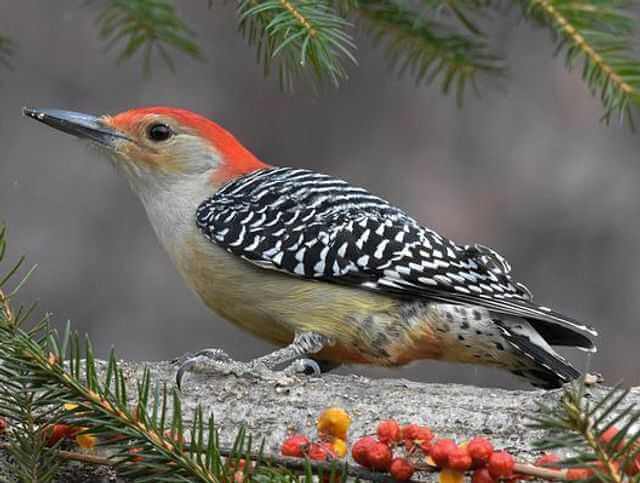
- Length: 9.5 in (24 cm)
- Weight: 2.0-3.2 oz. (56-90 g)
- Wingspan: 13.0-16.5 in (33-42 cm)
- Scientific Name: Melanerpes carolinus
- Frequency of Occurrence: 33.99%
- Where To Find Them: The Red-bellied Woodpecker is a common bird in Iowa. They can be found in many areas and they have a varied diet. Some of the locations they are found in Iowa are the Des Moines Valley, the Mississippi River Valley, and the Cedar River Valley.
- How to Attract: One way to attract red-bellied woodpeckers is to feed them black-oil sunflower seeds. These seeds are high in oil and protein, which the birds will appreciate. Another food that red-bellied woodpeckers enjoy is suet, which can be found at most pet stores. Mealworms are a great option for bird feeders because they provide not only food, but also entertainment. Finally, peanuts are a good option for bird feeders because they contain both protein and fat.
Description: The red-bellied woodpecker is a common bird found in the eastern and central United States. The distribution range of this bird extends from southern Canada, through most of the eastern United States, to Mexico. Habitat preferences for this woodpecker include areas with plenty of trees, including deciduous, mixed coniferous, and pine forests.
The red-bellied woodpecker primarily eats insects and small birds. In some parts of its range, such as Illinois and Wisconsin, the red-bellied woodpecker is considered an important part of the ecosystem by feeding on large numbers of insects harmful to other species, such as bark beetles.
Handpicked Related Post: How to Attract Red-bellied Woodpeckers to your Yard?
Hairy Woodpecker

- Length: 7.1-10.2 in (18-26 cm)
- Weight: 1.4-3.4 oz. (40-95 g)
- Wingspan: 13.0-16.1 in (33-41 cm)
- Scientific Name: Picoides villosus
- Frequency of Occurrence: 13.69%
- Where To Find Them: Hairy Woodpecker are found in the following locations in Iowa: Cedar Rapids, Dubuque, Fort Dodge, Indianola, Marshalltown, Muscatine, and Waterloo.
- How To Attract: The black-oil sunflower seeds are a great way to attract the hairy woodpecker. They are high in protein, and contain both oil and proteins. The suet can be used as a food source or to attract predators. The fruit oranges will help to attract the woodpecker to your garden, while grapes will provide them with some much-needed sugar. Apples or peanut butter can also be a good food source for the woodpecker.
Description: The Hairy Woodpecker is a common bird in the North American forests. It is found throughout most of Canada and the northeastern United States, with a small area extending into Minnesota. In the east, it ranges south to central Florida and west to eastern Texas.
The Hairy Woodpecker typically inhabits mature hardwood forests, but can be found in other types of woodland as well. They feed mainly on insects and other small creatures, but will also take fruit when available. They are able to extract insects from tree bark using their sharp claws and beaks.
Red-headed Woodpecker
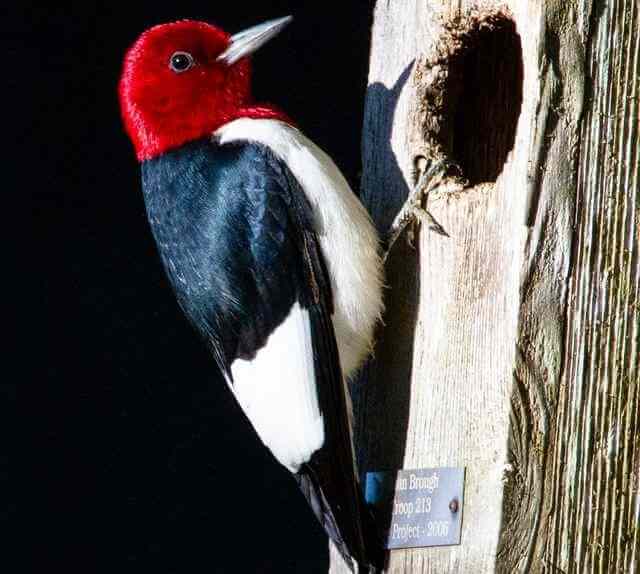
- Length: 7.5-9.1 in (19-23 cm)
- Weight: 2.0-3.2 oz. (56-91 g)
- Wingspan: 16.5 in (42 cm)
- Scientific Name: Melanerpes erythrocephalus
- Frequency of Occurrence: 10.83%
- Where To Find Them: Some locations in Iowa where you may find a Red-headed Woodpecker include the Wildlife Acres Park in Ames, the Hiawatha National Forest, and the State Fairgrounds in Des Moines.
- How to Attract: If you’re looking to attract red-headed woodpeckers to your backyard, some key items to include in your bird feeder are black-oil sunflower seeds, suet or mealworms, and peanuts. All of these foods will provide the birds with essential nutrients and energy while keeping their bills full!
Description: The Redheaded woodpecker is a common bird found in the eastern and central United States. It occupies a range that extends from southern Maine south to northern Georgia, west to the Dakotas, and north to Iowa and Minnesota. The redheaded woodpecker is most commonly seen in open areas with plenty of trees, such as deciduous forests, oak-hickory woodland, or mixed hardwood-coniferous forests.
In winter, it prefers more open habitats such as fields or pastures. The redheaded woodpecker primarily eats insects, but will also feed on small spiders or other invertebrates as well as nuts, seeds, and berries.
Handpicked Related Post: Interesting Red-Headed Woodpecker Facts (Explained)
Pileated Woodpecker
- Length: 15.8-19.3 in (40-49 cm)
- Weight: 8.8-12.3 oz. (250-350 g)
- Wingspan: 26.0-29.5 in (66-75 cm)
- Scientific Name: Dryocopus pileatus
- Frequency of Occurrence: 3.53%
- Where To Find Them: These birds are most commonly found near large bodies of water, such as rivers and lakes. Some locations where you may find a pileated woodpecker include the Southern Hills Nature Preserve in Muscatine County, the Osage Hills Wildlife Area in Henry County, and the Des Moines River Valley State Park in Polk County.
- How To Attract: If you want to attract a Pileated Woodpecker to your yard, try scattering black oil sunflower seeds around the perimeter of your property. Pileated Woodpeckers are attracted to suet, which is made from animal fat. You can also feed them mealworms or peanuts.
Description: Pileated Woodpecker distribution range. The pileated woodpecker is a large, tall woodpecker that can be found in the eastern United States and parts of Canada. In the east, it ranges from southern Maine south to northern Florida, and west to eastern Texas. It also ranges north through central Ontario and Quebec to Labrador.
The pileated woodpecker inhabits moist forests dominated by oak, hickory, maple, birch and other hardwoods. The diet consists mainly of insects such as beetles, ants but also includes berries, fruit, seeds, and nuts.
Handpicked Related Post: How to Attract Pileated Woodpeckers to your Yard (Fast)
Lewis’s Woodpecker

- Length: 10.2-11.0 in (26-28 cm)
- Weight: 3.1-4.9 oz. (88-138 g)
- Wingspan: 19.3-20.5 in (49-52 cm)
- Scientific Name: Melanerpes lewis
- Frequency of Occurrence: 0.0004%
- Where To Find Them: They can be found in various locations, but some popular spots include the Cedar River Valley and the Des Moines River Valley.
- How to Attract: There are many ways to attract Lewis’s Woodpecker to your backyard. One way is to offer them black-oil sunflower seeds, which are a favorite food of this bird. You can also provide suet, fruit, and peanuts as a source of food.
Description: The Lewis’s Woodpecker is a common bird throughout the eastern and central United States, as well as parts of Canada. The Lewis’s Woodpecker ranges in distribution from southern New England through the Great Lakes region to southern Illinois and Iowa, as well as parts of Missouri, Kentucky, Tennessee and Alabama.
The woodpecker inhabits areas with deciduous or mixed forests, but can also be found near large bodies of water such as lakes and reservoirs. It forages for insects on trees, including those in the understory and on the ground as well as fruit, berries and nuts. They are particularly fond of acorns.
Acorn Woodpecker
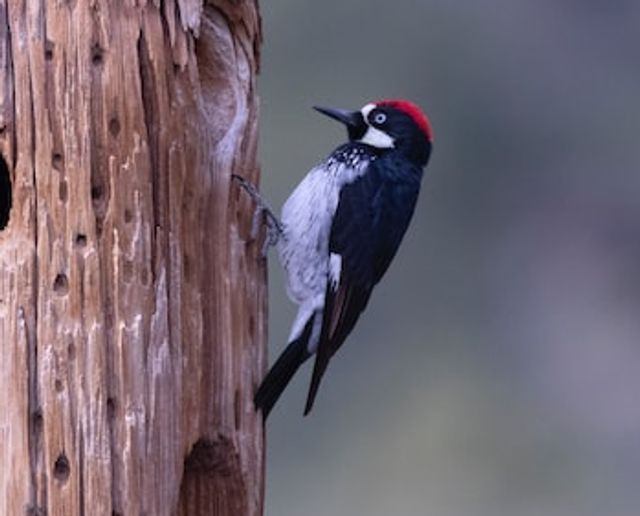
- Length: 7.3-9.4″ in (18.5-24.0 cm)
- Weight: 2.3-3.2 oz. (65-90 g)
- Wingspan: 13.8-17.7 in (35-45 cm)
- Scientific Name: Melanerpes formicivorus
- Frequency of Occurrence: 0.0001%
- Where To Find Them: They are most commonly found in the northeast part of the state, but they have been seen as far west as Des Moines and Urbandale.
- How To Attract: If you’re looking to attract Lewis’s Woodpecker, you need to offer them some of their favorite foods. Black-oil sunflower seeds are a good option because they contain a lot of protein, and suet or peanut butter are both great choices because they offer plenty of energy and nutrients. You can also offer fruit or other high-energy snacks.
Description: The Acorn Woodpecker ranges across much of the eastern and central United States, including all of Florida, parts of Illinois, Indiana, Kentucky, and Tennessee. . This woodpecker is most commonly found in deciduous and mixed woods, but it also inhabits Douglas fir forests and pine barrens.
Acorn Woodpeckers are insectivorous, preying on insects such as beetles, cockroaches, termites, and ants. They also eat sap from trees such as oaks and maples, which helps to maintain their tree-based diet. Breeding occurs primarily in late April to early August, when two to six eggs are laid in a hole or tree cavity.
Black-backed Woodpecker
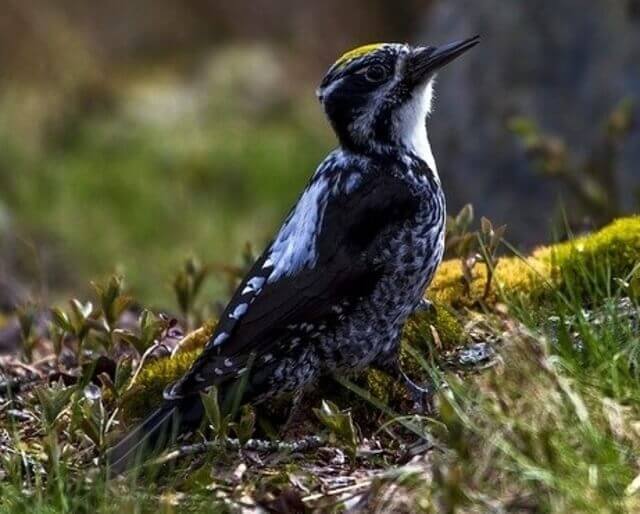
- Length: 9.1 in (23 cm)
- Weight: 2.1-3.1 oz. (61-88 g)
- Wingspan: 15.8-16.5 in (40-42 cm)
- Scientific Name: Picoides arcticus
- Frequency of Occurrence: 0.0001%
- Where To Find Them: Some popular locations for black-backed woodpeckers in Iowa include Ottumwa, Burlington, and Keokuk.
- How to Attract: Black-backed Woodpecker are attracted to food that is high in energy, such as suet or sunflower seeds. Try scattering these items around your yard in strategic locations. Another way to attract the birds is by providing fruit that they like, such as oranges, grapes, apples, or peanut butter. Make sure to put these items in areas where the woodpeckers can easily find them.
Description: The black-backed woodpecker is distributed throughout the eastern and southeastern United States. Habitat includes both moist and dry forests, but it is especially common in areas with tall trees and plenty of insects to eat.
The black-backed woodpecker feeds mainly on insects, spiders, fruits, and nuts. It has a characteristic “chattering” call that can be heard throughout its range. The black-backed woodpecker breeds from June to July.

